Our last blog post looked at books we have used in Community Nights that explore community and togetherness. Now, we are taking a look at books that describe more abstract concepts like shapes and numbers or how people process thoughts and emotions. Of course, even abstract concepts can still be described in fun and engaging ways. This series of books shows a wide range of interactive storytelling and reading opportunities for families.
Count the Monkeys by Mac Barnett and Kevin Cornell
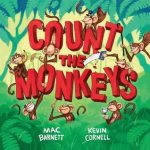 This book is one of our favorites for multiple reasons. We used this book to show parents simple and convenient ways to practice basic math skills with their little ones. It provides counting exercises coupled with a fun story-line of an ever-increasing number of strange and silly creatures. Naturally, a book about counting monkeys wouldn’t be complete without a twist at the end (but we won’t give it away!).
This book is one of our favorites for multiple reasons. We used this book to show parents simple and convenient ways to practice basic math skills with their little ones. It provides counting exercises coupled with a fun story-line of an ever-increasing number of strange and silly creatures. Naturally, a book about counting monkeys wouldn’t be complete without a twist at the end (but we won’t give it away!).
The Greedy Triangle by Marilyn Burns
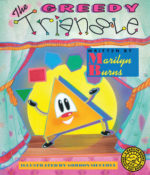 From the first page to the last, students are engaged with shapes, specifically triangles, and the myriad ways they appear in the real world. Found in the shape of musical instruments, slices of pie, and catching wind in the sails of sailboats, triangles shape so much around us. But, as we often do to fit in, the protagonist shape-shifts into a quadrilateral, a pentagon and more intricate shapes. Eventually it realized it was happiest as a triangle. After reading this book parents found that it doubled as both a geometry lesson and a way to teach children to be themselves.
From the first page to the last, students are engaged with shapes, specifically triangles, and the myriad ways they appear in the real world. Found in the shape of musical instruments, slices of pie, and catching wind in the sails of sailboats, triangles shape so much around us. But, as we often do to fit in, the protagonist shape-shifts into a quadrilateral, a pentagon and more intricate shapes. Eventually it realized it was happiest as a triangle. After reading this book parents found that it doubled as both a geometry lesson and a way to teach children to be themselves.
Yesterday I Had the Blues by Jeron Ashford Frame
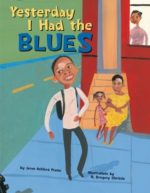 Sometimes, kids don’t know how to express themselves. By exploring feelings with the use of colors (blues, greens, grays, indigos, and more), this book paints a vivid picture of the vast range of human emotions. Families had a great time learning about ways to support their children’s emotional development. The book also provided ways to effectively explore these feelings together. “And when Mama says she got the reds, it’s probably a good time to stop jumping on the bed!”
Sometimes, kids don’t know how to express themselves. By exploring feelings with the use of colors (blues, greens, grays, indigos, and more), this book paints a vivid picture of the vast range of human emotions. Families had a great time learning about ways to support their children’s emotional development. The book also provided ways to effectively explore these feelings together. “And when Mama says she got the reds, it’s probably a good time to stop jumping on the bed!”
Sir Cumference and the First Round Table by Cindy Neuschwander and Wayne Geehan
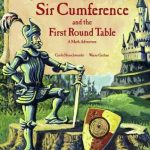 Sir Cumference and Lady Di of Ameter (and their son Radius) are on a mission to help King Arthur figure out the most efficient way to construct a table. There, all the knights in the kingdom can meet to talk about possible preparations for war with the Circumscribers. Through trial and error, Sir Cumference and Lady Di use their mathematical skills to solve this tricky problem. The author’s quirky play on mathematical terms and word usage helped to make a humorous and enjoyable reading experience for the whole family.
Sir Cumference and Lady Di of Ameter (and their son Radius) are on a mission to help King Arthur figure out the most efficient way to construct a table. There, all the knights in the kingdom can meet to talk about possible preparations for war with the Circumscribers. Through trial and error, Sir Cumference and Lady Di use their mathematical skills to solve this tricky problem. The author’s quirky play on mathematical terms and word usage helped to make a humorous and enjoyable reading experience for the whole family.
Tar Beach by Faith Ringgold
 A magical-realist trip through New York City, this book was originally a story quilt designed by Ms. Ringgold which combined autobiography, fictional narrative, paintings and quilt-making. Each page is bordered with a kaleidoscope of repetitive geometric designs. We used this book to share the power of storytelling. Families also discovered new ways to explore pursuing dreams, imagination, and creativity with their child through the experiences of the main character.
A magical-realist trip through New York City, this book was originally a story quilt designed by Ms. Ringgold which combined autobiography, fictional narrative, paintings and quilt-making. Each page is bordered with a kaleidoscope of repetitive geometric designs. We used this book to share the power of storytelling. Families also discovered new ways to explore pursuing dreams, imagination, and creativity with their child through the experiences of the main character.
The Grapes of Math by Greg Tang
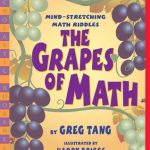 Through rhyming instructions, this book teaches students how to count by using clever grouping methods. Every day objects like strawberry seeds, birds eggs, and ants become useful counting tools. Families can use this book to learn a variety of mathematical and problem solving skills. Some of these include subtraction, addition, identifying patterns, and developing other creative problem solving strategies.
Through rhyming instructions, this book teaches students how to count by using clever grouping methods. Every day objects like strawberry seeds, birds eggs, and ants become useful counting tools. Families can use this book to learn a variety of mathematical and problem solving skills. Some of these include subtraction, addition, identifying patterns, and developing other creative problem solving strategies.
What Do You Do With An Idea? By Kobi Yamada
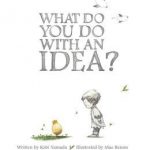 This book takes the abstract concept of what an idea is and shows the reader how to cultivate it into a life-and world-changing experience. New ideas can sometimes be scary to share, hard to confront, or met with laughter. But in the end, it is our ideas that add color to the world around us. We used this book to encourage parent leaders to trust the power and integrity of their ideas that will one day develop sustainable school programs that support other, emerging parent leaders.
This book takes the abstract concept of what an idea is and shows the reader how to cultivate it into a life-and world-changing experience. New ideas can sometimes be scary to share, hard to confront, or met with laughter. But in the end, it is our ideas that add color to the world around us. We used this book to encourage parent leaders to trust the power and integrity of their ideas that will one day develop sustainable school programs that support other, emerging parent leaders.
When families find books that are engaging, it makes reading together a much more enjoyable activity. Conversations between parents and children blossom into new thoughts and ideas to be used in classrooms or in the home. By reading together, parents can help set their children on the right path toward academic, emotional, and social success.
